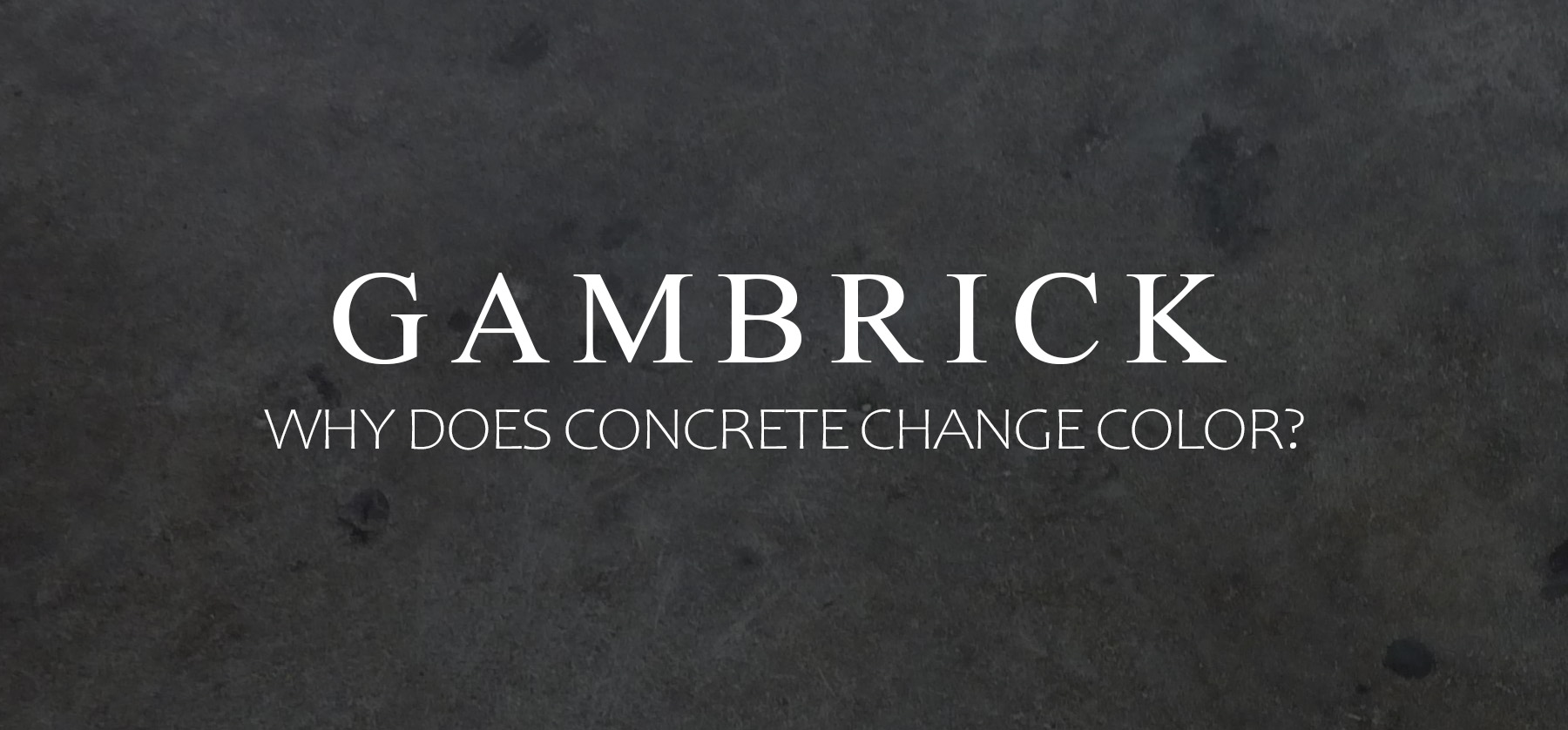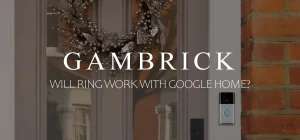
Why Does Concrete Change Color?
A few factors contribute to the discoloration of concrete. The biggest reasons why concrete changes color are calcium chloride, water, installation methods and the overall mix of your concrete. A low water to cement ratio affects the hydration of the cement which creates a darker color. Concrete surfaces that are troweled too early will increase the water to cement ratio at the surface which lightens the color. Mixture inconsistency can create a wide array of color discolorations based on what’s in the mix and how much. When and how much water you add can also create color issues and so can calcium. And colors such as blue, green, and even yellow are often caused by sulfur reacting with other compounds found in the cement.
Concrete can turn white due to efflorescence or sunlight. Both of these issues can be fixed with a good quality sealer that has UV protection.
Concrete can turn black due to inconsistencies with the ingredient mixture. This isn’t something you can fix after the concrete has been made.
Knowing what can cause color changes in concrete allows you to take steps to prevent it. And if discoloration does happen, there are steps you can take to bring back a more consistent color.
Concrete work can be a beautiful finish while also increasing the value of your home. Many Modern homes rely on concrete as a driveway, walkway and even wall finish. But when concrete changes color and is no longer uniform, it can look really bad.
If you plan on working with concrete it’s very important to understand why concrete changes color and how to prevent it.
Common Causes Of Discolored Concrete
Why does concrete change color? Concrete discoloration is generally due to one main cause: inconsistency. This can be an inconsistency in the mixture or in workmanship.
Since a variety of reasons can cause concrete discoloration, it’s important to look at them all.
The most common discoloration we tend to see in concrete are streaks or blotches. These can be darker or lighter than the overall concrete color.
More extreme color changes in concrete such as blue, green, or yellow are the result of a more environmentally friendly concrete mixture being used called “slag”.
Slag contains a mixture of recycled materials aimed to reduce environmental impacts. This form of concrete tends to produce a bluish and greenish color after about a year. If you want a more traditional concrete color then I recommend you stick with a traditional concrete mix. However, if you don’t mind the color discoloration, slag is a cheaper mix.
Inconsistency
Why does concrete change color? Inconsistencies. To avoid color issues, it’s very important to maintain consistency throughout the project. Concrete deliveries that are different from batch to batch make it harder to achieve a uniform concrete color. This is just as true if you mix the concrete yourself, although by making your own you have more control over the ingredients.
Inconsistency in the concrete mixture is the most common cause of color changes. Many people that are new to concrete think of premixed concrete that comes in a bag. However there are many different ingredients in a concrete mixture which produce different strength and color concrete. If you vary the ingredient amounts even a little then the color can change.
Using more than one brand or supplier of concrete on the same job is a bad idea. This will most likely produce two different concrete colors. Consistency is key when pouring concrete. Ideally you want the brand or supplier, the amounts, the ingredients, and everything else to be exactly the same. Consistency yields the best results.
Concrete is a mixture of cement, sand, stone, water, and possibly fibers. Making sure these ingredients are all the same from batch to batch is important for a consistent color. All concrete ingredients must comply with American Society for Testing and Materials (ASTM) standards and concrete aggregates must be of good quality.
Water levels should be adjusted based on the moisture content of your sand and stone. And the amount you use should be consistent from batch to batch. If you vary how much water you use it could effect the color.
Water
Water is a very important ingredient for making concrete. The amount of water used must be consistent with each mix until the project is complete. Without a consistent water level you can end up with a blotchy texture and varying shades.
If you’re doing this concrete project on your own, make sure to always measure the amount of water you’re using with the same amount of concrete mixture. This is especially important if it’s a big project that requires multiple batches of concrete. For example, if your pouring a sidewalk that’s 50′ long, one end needs to be the same color as the other. To do this you want each of your mixes to include the same ratio of water and concrete to produce a uniform and constant color.
Adding Water To A Mix
Sometimes you may have to adjust a batch by adding more water to make it workable. More water makes finishing the concrete a little easier. Small variations in concrete moisture are common and typically not a bad thing. But modifying mixes in the field, followed by inefficient mixing, can produce a blotchy appearance.
Changes in color becomes especially noticeable in side by side applications. When water is added at the end of one batch to keep it from drying out and then placed next to an earlier batch, the color can be a little off.
To prevent this make sure to only mix as much as you can pour at one time before the concrete dries out. If you have to add water to make the concrete workable then you’ve mixed too much or worked too slow.
Poor Workmanship
Poor workmanship is another big problem that can result in concrete discoloration. When it comes to pouring large areas of concrete that require multiple batches, an experienced mason is a must.
Avoid trowel burning your concrete. Metal fragments can become embedded in the concrete as a result of trowel burning and this causes spots of dark color.
Uneven curing can cause discoloration. Hydration is affected by curing and when it isn’t uniform, the result can be light and dark concrete. I once saw a mason cover a new concrete driveway with plastic before a light rain. The result was an uneven curing and a driveway that looked like tiger stripes.
If you’re doing this concrete project on your own, check the weather at the time you pour. If there’s any chance of rain then I recommend you re-schedule.
How a contractor handles variables during a concrete pour, such as weather conditions that suddenly change, can have a big impact on the final results. For example, in a very dry climate, we wet down the ground prior to pouring the slab. This stops moisture from being sucked out of the new concrete too fast.
Pouring concrete in really hot weather where moisture evaporates too quickly can also be an issue. We schedule our pours around the heat to try and avoid it as much as possible. We also splash water on the surface from time to time to help with troweling. This all needs to be done by an experienced mason however or you’ll risk an uneven coloring.
Calcium Chloride
Why does concrete change color? A common cause of a darkened concrete appearance is the addition of calcium chloride. It’s added into many concrete mixes to accelerate the setting time of concrete. This helps on larger jobs where time is an issue and an even coloring isn’t as important. For example if your pouring the floor of a large warehouse.
When calcium chloride dosages approach 2% by weight of the cement discoloration can get really bad. Inadequate mixing after the addition of calcium chloride makes the concrete color even more irregular or blotchy.
If your time constrained and want to add a little calcium chloride to speed things up, make sure not to add to much and do a very good mixing before you pour. If the batch isn’t well mixed then areas with more calcium will discolor more then areas with less.
Prevention
Why does concrete change color? The biggest reason by far is inconsistency. And the best solution for that is prevention. Here are a few things to consider for your next concrete project.
- If you’re buying concrete from a supplier try to get as much as you can from a single truck load. Getting all your concrete from a single mix will reduce the chance of color changes.
- If you need more than one truck load get it from the same supplier and on the same day. Typically the mix will be the same.
- High alkali contents can contribute to discoloration. If your using bagged concrete make sure to check the label to see which has the least of these ingredients.
- Avoid calcium chloride in your concrete mixtures unless you need a fast drying concrete. If you do need to add some then make sure you mix the concrete thoroughly.
- Measure your ingredients with a bucket. Make sure everything you use is the exact same amounts. This will help keep the color consistent.
How To Fix Discolored Concrete
Unfortunately, most concrete discoloration can’t be undone. But there are a few cases where you can improve things a bit.
If the discoloration is caused by calcium chloride, a little hard work may help. Use soap and hot water first. Scrub the concrete thoroughly and allow it to dry. If no improvement is shown then you can try something stronger. A diluted solution of hydrochloric acid can be used. Wet the concrete before application and then scrub the acid onto the concrete to clean the discoloration. Wash the concrete down with hot water when your done.
Try store bought cleansers. They typically won’t completely undue the discoloration but they can help even things out.
Another solution is to color the concrete. You can buy a concrete stain at any Home Depot or online. They come in a variety of colors and are easy to apply. However they don’t look like real concrete.
Don’t pour another layer of concrete over the first one. This generally results in cracks.
Bleaches
Using bleaches applied to the darker areas is a time consuming and expensive process. The slab can be evened out to a more uniform color, but the effectiveness of this approach highly depends on the slab and cause of the discoloration.
Keep in mind that as the slab ages and becomes worn by usage, the bleached areas may aged a different color than the rest of the concrete.
Summary: Why Does Concrete Change Color?
A few factors contribute to the discoloration of concrete. The biggest reasons why concrete changes color are calcium chloride, water, installation methods and the overall mix of your concrete. A low water to cement ratio affects the hydration of the cement which creates a darker color. Concrete surfaces that are troweled too early will increase the water to cement ratio at the surface which lightens the color. Mixture inconsistency can create a wide array of color discolorations based on what’s in the mix and how much. When and how much water you add can also create color issues and so can calcium. And colors such as blue, green, and even yellow are often caused by sulfur reacting with other compounds found in the cement.
Knowing what can cause color changes in concrete allows you to take steps to prevent it. And if discoloration does happen, there are steps you can take to bring back a more consistent color.
Concrete work can be a beautiful finish while also increasing the value of your home. Many Modern homes rely on concrete as a driveway, walkway and even wall finish. But when concrete changes color and is no longer uniform, it can look really bad.
If you plan on working with concrete it’s very important to understand why concrete changes color and how to prevent it.
If you have any questions or comments e-mail us any time. We’d love to hear from you.

John Mazzuca | About | More Posts |
Custom Home Builder
John Mazzuca is a custom home designer and builder at Gambrick with over 25 years experience in the construction industry. John has designed, built and/or remodeled hundreds of homes, small buildings, and commercial projects. He writes about business, real estate, home building, and household electronics. His work has been featured in Fox Business, Better Homes & Garden, House Beautiful, and more.




















